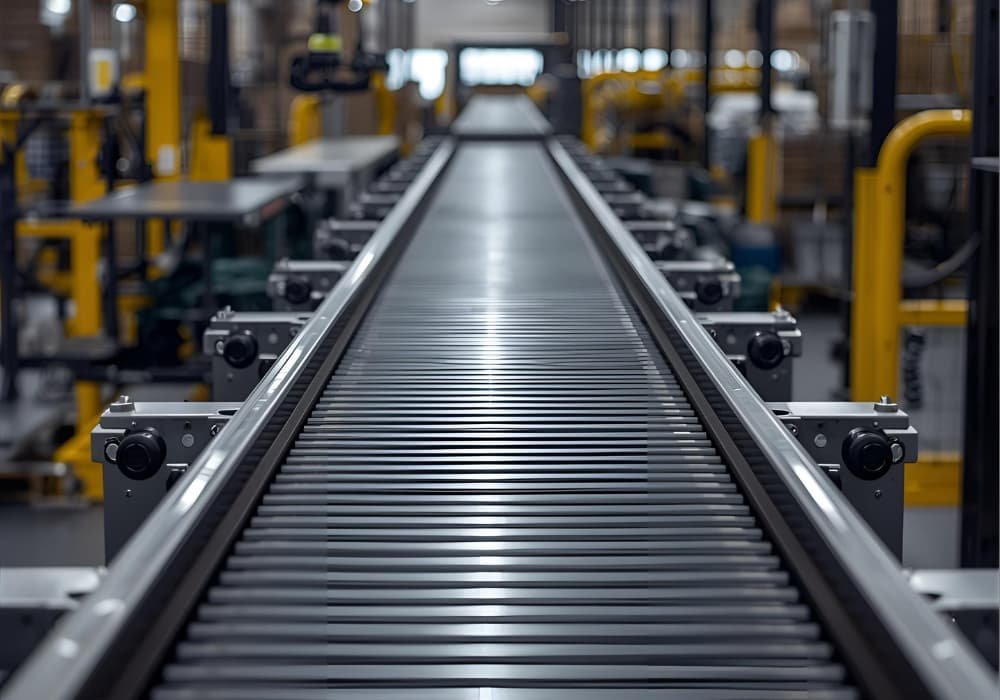Endüstriyel Konveyör Bant

When entering a factory, one of the first things that catches your eye is the moving conveyor belts. This is because they silently guide the flow of production. As materials are moved from one point to another, workers' workload is lightened, processes are accelerated, and a flawless order is established. Imagine a production line without these belts, and it's immediately obvious how slow things would move. This is why the importance of conveyor belts in the industry is becoming increasingly evident every day.
Different Conveyor Belt Types and Their Usage Areas
Conveyor belts may seem like a single type, but once you get into the nitty-gritty, you'll encounter a completely different world. PVC belts are preferred for lightweight production, PU belts for more specialized applications, and modular belts stand out for their durability. Flat belts, on the other hand, are known for their quiet operation and compact design. These types, selected according to the needs of each sector, enable the production line to operate at its most efficient.
Features and Advantages of Flat Belts
Flat belts are one of the most preferred elements in the conveyor world. Their lightweight construction saves energy, and their quiet operation reduces noise in the workplace. The belt's surface properties allow for the smooth conveying of various materials. Furthermore, their ease of installation minimizes maintenance time. This reduces downtime and enables businesses to maintain continuous production.
Heavy Industry Applications Requiring High Durability
Conveyor belts are put to the most challenging test in heavy industry applications. These belts carry stones and ore in mining, tons of loads in the cement industry, and heavy metals in the iron and steel industry. To handle such loads, specialized designs with high durability are preferred. Steel-cord belts or models with thick coatings are prominent in these sectors, where durability is not just a feature; it's a vital requirement.
Effects on Carrying Capacity and Efficiency
One of the most critical indicators of a conveyor system is its carrying capacity. As capacity increases, production speeds up, and with this speed, efficiency shines through. For businesses, this efficiency translates directly to cost advantages. More product is moved in less time, maximizing the use of manpower. This results in significant savings in both labor and time.
Energy Efficiency and Ease of Maintenance
In an era of constantly rising energy costs, efficiency has become a vital concept for businesses. Thanks to the new materials used in conveyor belts, more loads can be carried with less energy consumption. Furthermore, ease of maintenance is a major advantage for businesses. The belts' quick removal and installation, combined with their long-lasting design, prevents production interruptions.
Digitalization and Smart Systems in Conveyor Belts
Nowadays, mechanical features alone are no longer considered sufficient. With digitalization, sensors are being added to belts, and IoT technologies allow for real-time monitoring. The degree of belt load, wear, and overheating are instantly detected. This allows preventative measures to be taken before malfunctions occur, ensuring production continuity.
Conveyor Belt Technologies of the Future
Looking to the future, sustainability is at the forefront of conveyor belts. Belts manufactured with recyclable materials offer an environmentally friendly solution. Furthermore, next-generation lightweight composite materials offer higher performance and longer lifespan. With Industry 4.0, it is envisioned that belts will be fully integrated into production lines and managed by artificial intelligence-supported systems.



